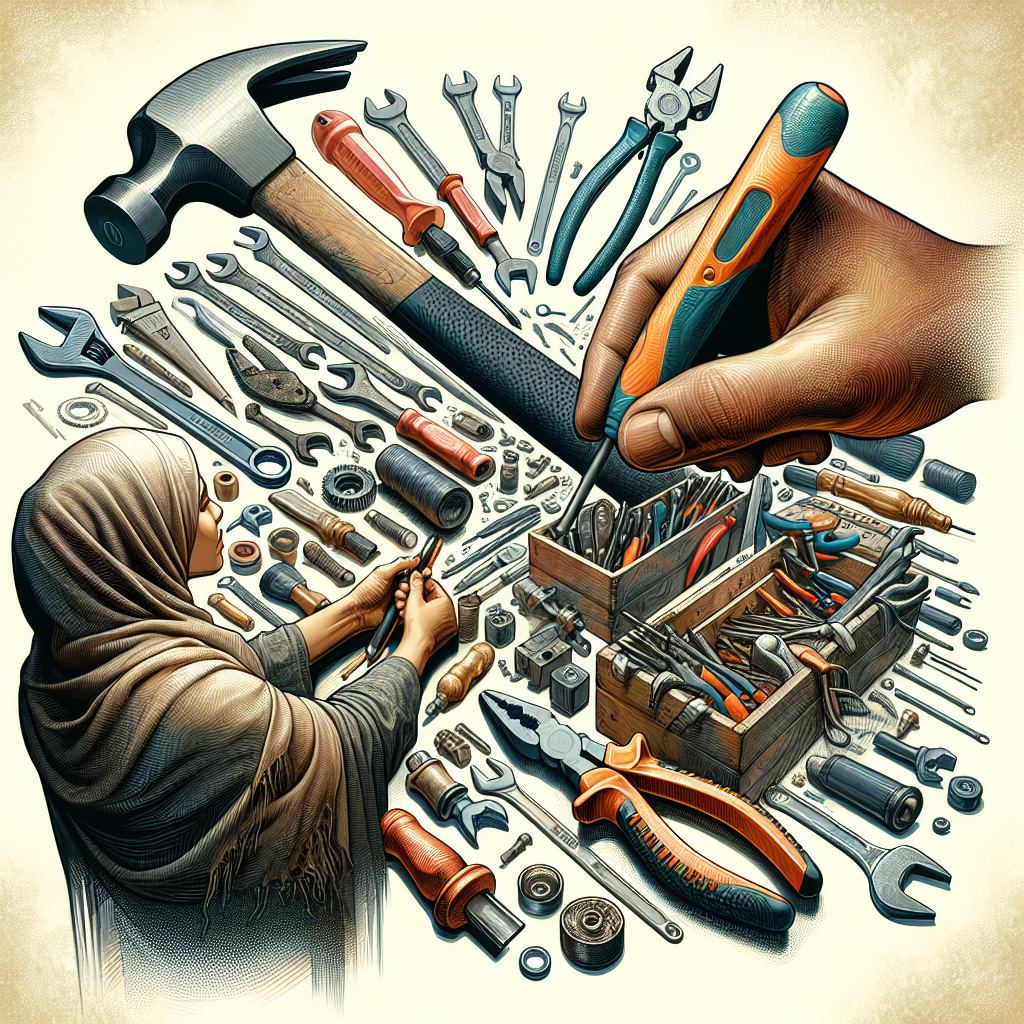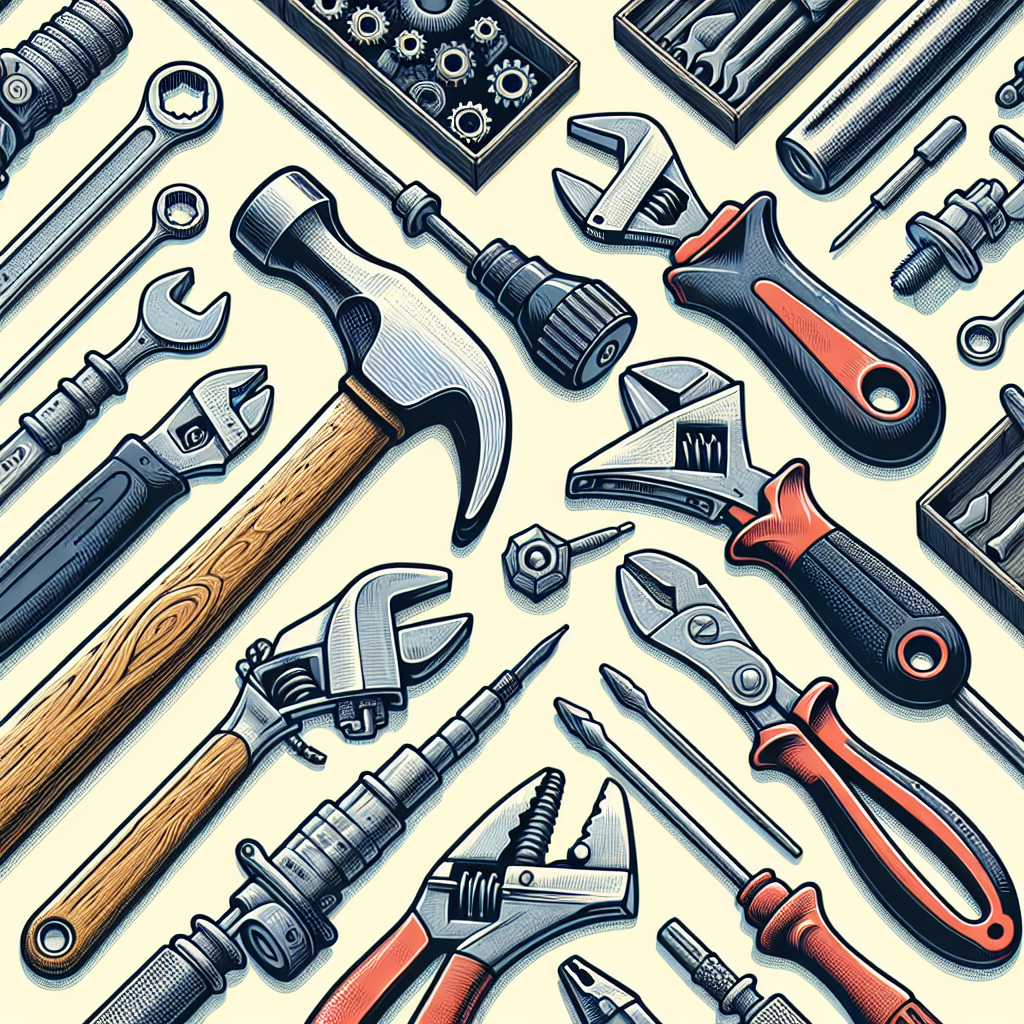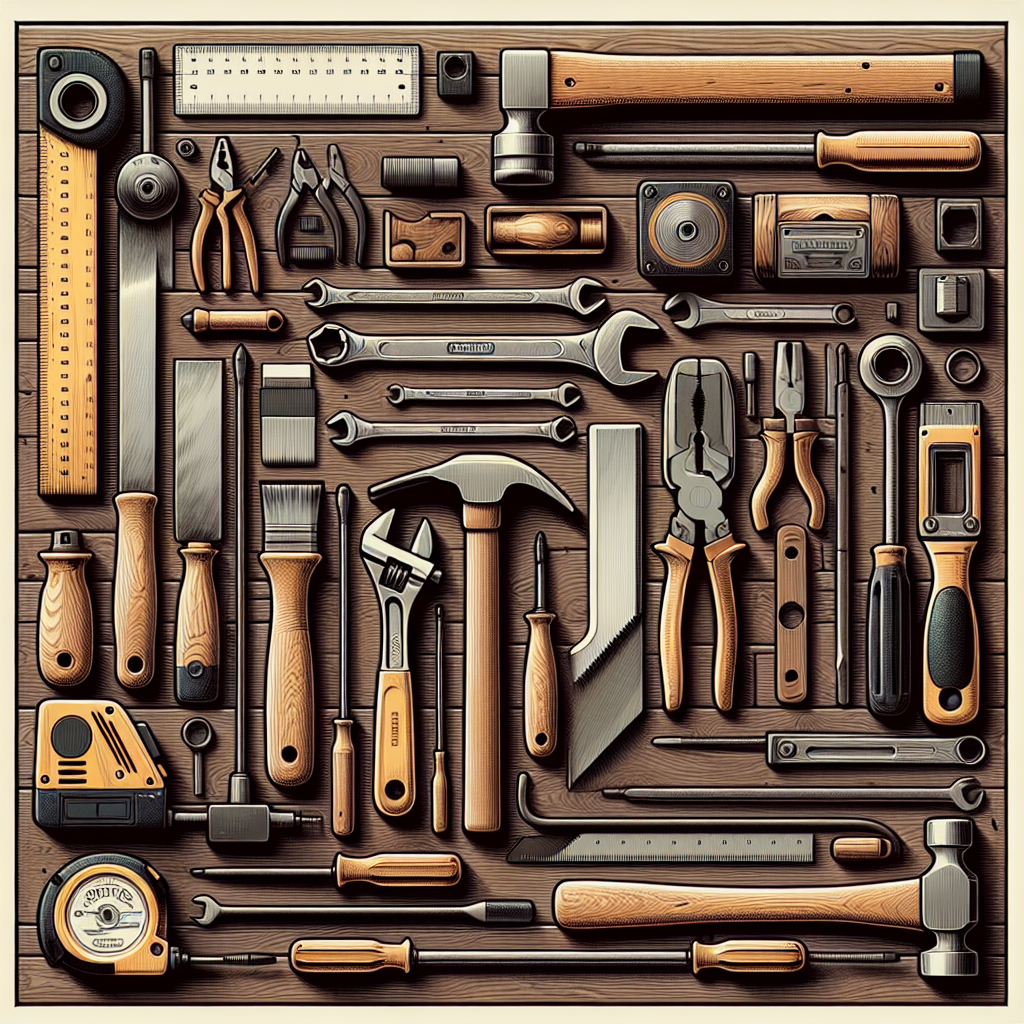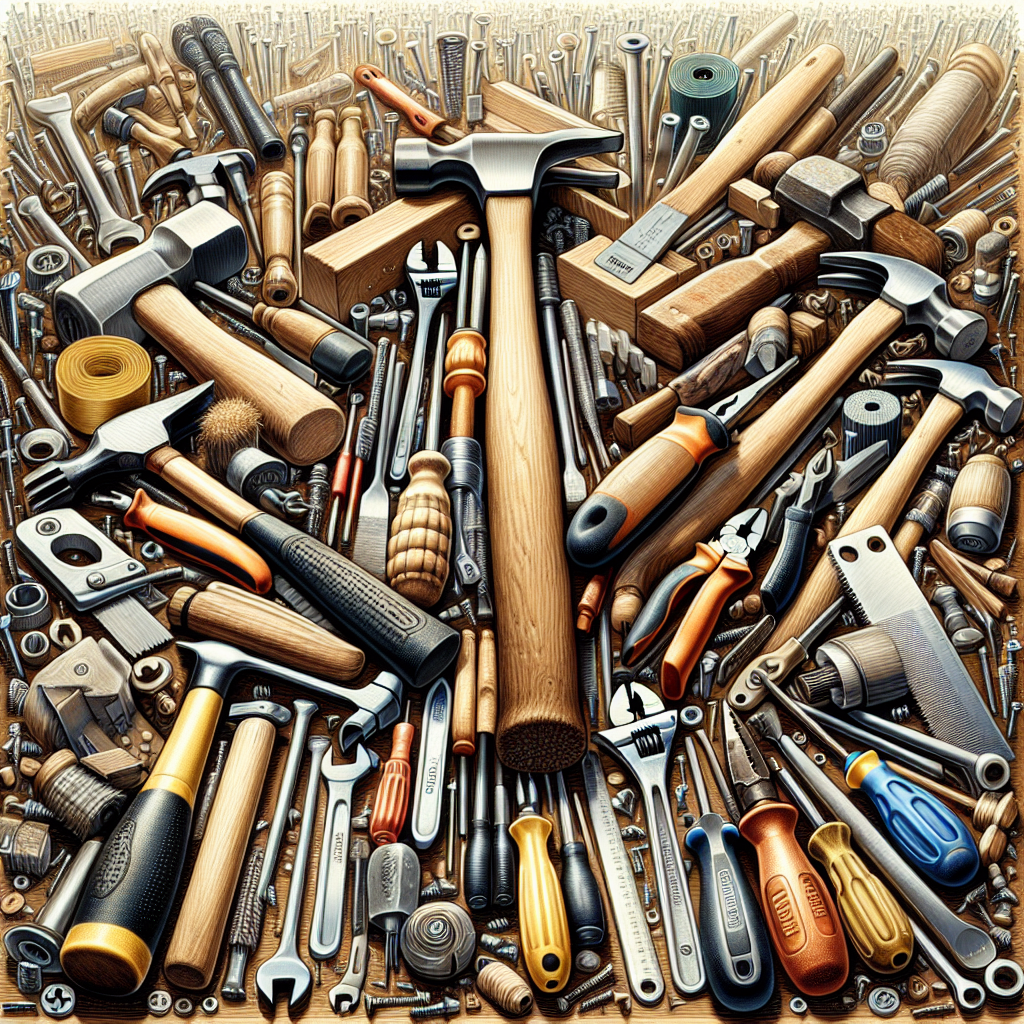Hand tools are the trusty companions that help you tackle various tasks with ease. From tightening screws to cutting through materials, these versatile tools are designed to be operated manually, using nothing but the strength of your hand. Whether you’re an avid DIY enthusiast or a professional tradesperson, understanding the essence of hand tools is crucial. So, let’s explore the realm of these indispensable tools and discover the multitude of possibilities they offer.
What is a hand tool?

Definition of a hand tool
A hand tool is a type of tool that is designed to be used by hand, without the need for power or electricity. These tools are operated manually and are primarily used for tasks that require precision and control. Hand tools are the backbone of any home improvement project, offering a wide range of functions and applications.
Types of hand tools
Hand tools come in a variety of shapes, sizes, and functionalities, each designed for specific tasks. Some common types of hand tools include:
-
Screwdrivers: Used for inserting and removing screws, screwdrivers come in various sizes and types, such as flathead and Phillips head.
-
Hammers: Hammers are essential for driving nails, breaking objects, or shaping materials. They come in different weights and handle materials to suit various purposes.
-
Wrenches: Wrenches are tools used for turning bolts, nuts, or pipes. They are available in different sizes and designs, including adjustable wrenches and combination wrenches.
-
Pliers: Pliers are versatile tools used for gripping, twisting, cutting, and bending various materials. They are available in different types, such as needle-nose pliers and lineman’s pliers.
-
Saws: Saws are used for cutting through materials like wood, metal, or plastic. Hand saws, coping saws, and hacksaws are some common types.
-
Chisels: Chisels are used for carving or cutting through materials like wood or stone. They come in various shapes and sizes to accommodate different applications.
-
Screwdrivers: Used for inserting and removing screws, screwdrivers come in various sizes and types, such as flathead and Phillips head.

Advantages of using hand tools
There are several advantages to using hand tools for your home improvement projects:
-
Portability: Hand tools are lightweight and can be easily carried around, making them convenient for tasks that require mobility or when power tools are not accessible.
-
Versatility: Hand tools are available in a wide range of options, allowing you to find the perfect tool for the specific task you need to accomplish.
-
Precision: Hand tools often provide more control and precision compared to power tools, particularly when working on delicate or intricate projects.
-
Cost-effective: Hand tools are generally more cost-effective than their power tool counterparts, making them a great choice for those on a tight budget.
Disadvantages of using hand tools
Although hand tools offer numerous advantages, they also have a few drawbacks to consider:
-
Strength and speed limitations: Hand tools rely on human strength and can be slower compared to power tools. Tasks that require repetitive or heavy-duty actions may take longer to complete.
-
Physical exertion: For prolonged or demanding projects, using hand tools can be physically tiring and may require breaks or pacing oneself accordingly.

Essential hand tools for home improvement
When it comes to home improvement projects, having a set of essential hand tools can make your life much easier. Here are some must-have hand tools for home improvement:
-
Screwdriver set: A set of screwdrivers with various tips is essential for assembling furniture, tightening screws, and numerous other household tasks.
-
Claw hammer: A claw hammer is a versatile tool that can drive nails and remove them with its claw end. Choose one with a comfortable grip and balanced weight.
-
Adjustable wrench: An adjustable wrench allows you to work with different-sized nuts and bolts. Look for one with a wide jaw capacity and a sturdy build.
-
Tape measure: Accurate measurements are crucial in home improvement. A quality tape measure can ensure precision in cutting materials and spacing objects.
-
Utility knife: A utility knife is handy for cutting through materials like cardboard, carpet, or plastic. Opt for one with a retractable blade for safety.
-
Handsaw: A handsaw is a versatile cutting tool for woodwork and can be used for various tasks in home renovation or repair.
Safety precautions when using hand tools
While hand tools may not pose the same level of risk as power tools, it is still important to prioritize safety when using them. Here are some safety precautions to follow:
-
Wear appropriate protective gear, including safety glasses, gloves, and ear protection, depending on the task.
-
Ensure that your tools are in good condition, free from defects or damage that could compromise their functionality.
-
Use the right tool for the job. Using a tool for a purpose other than its intended use can lead to accidents or damage.
-
Keep your work area clean and organized to avoid tripping over tools or materials while working.
-
Always handle tools with care, keeping a firm grip and maintaining control.

How to choose the right hand tool for the task
Choosing the right hand tool for a particular task is essential for efficiency and safety. Here are some factors to consider when selecting a hand tool:
-
Identify the specific task or project requirements. Consider the materials you will be working with and the type of action needed.
-
Determine the size and scale of the project. Some tools may be better suited for smaller, detailed tasks, while others are designed for larger-scale projects.
-
Consider your skill level and experience. Some tools may require more expertise or practice to handle correctly.
-
Research different brands and read reviews to ensure you choose tools that are well-made and durable.
-
Test the tool, if possible, before making a purchase, to gauge its weight, grip comfort, and overall feel.
Common misconceptions about hand tools
There are a few common misconceptions about hand tools that are worth clarifying:
-
Hand tools are outdated: While power tools have gained popularity, hand tools remain indispensable for many tasks that require precision or where access to electricity is limited. Hand tools have been used for centuries and continue to play a vital role in various industries.
-
Hand tools are inferior to power tools: While power tools offer speed and convenience, hand tools have their own advantages in terms of control, precision, and affordability. It is important to recognize that both types of tools have their place and serve different purposes depending on the task at hand.
Famous hand tool brands
There are several renowned hand tool brands known for their quality, durability, and reliability. Some of the widely recognized brands include:
-
Stanley: Stanley is a well-known brand that offers a wide range of hand tools suitable for different tasks.
-
Craftsman: Craftsman tools are celebrated for their sturdiness and longevity, making them a favorite among professionals and DIY enthusiasts.
-
Snap-on: Snap-on tools are highly regarded for their exceptional quality and performance, particularly in the automotive industry.
-
Klein Tools: Known for their high-quality electrical hand tools, Klein Tools is a trusted brand for professionals in the electrical and telecommunications fields.
The future of hand tools
While technology continues to advance, it is unlikely that hand tools will become obsolete. Hand tools will always have their place in the world of home improvement, woodworking, and various trades. However, we may see some innovations in the design and materials used in hand tools to enhance their functionality and make them more ergonomic and user-friendly. As new techniques and materials are developed, hand tools will continue to evolve, but their fundamental purpose and value will remain unchanged – to help individuals tackle their projects with precision, control, and craftsmanship.
In conclusion, hand tools play a crucial role in home improvement projects and various trades. The wide range of hand tools available allows homeowners, DIY enthusiasts, and professionals to accomplish tasks with control, precision, and affordability. By following safety precautions, choosing the right tools for each task, and utilizing famous hand tool brands, you can ensure successful and satisfying results. While power tools may offer speed and convenience, hand tools will always find their place, evolving with new technologies but remaining an essential component in every toolbox.
